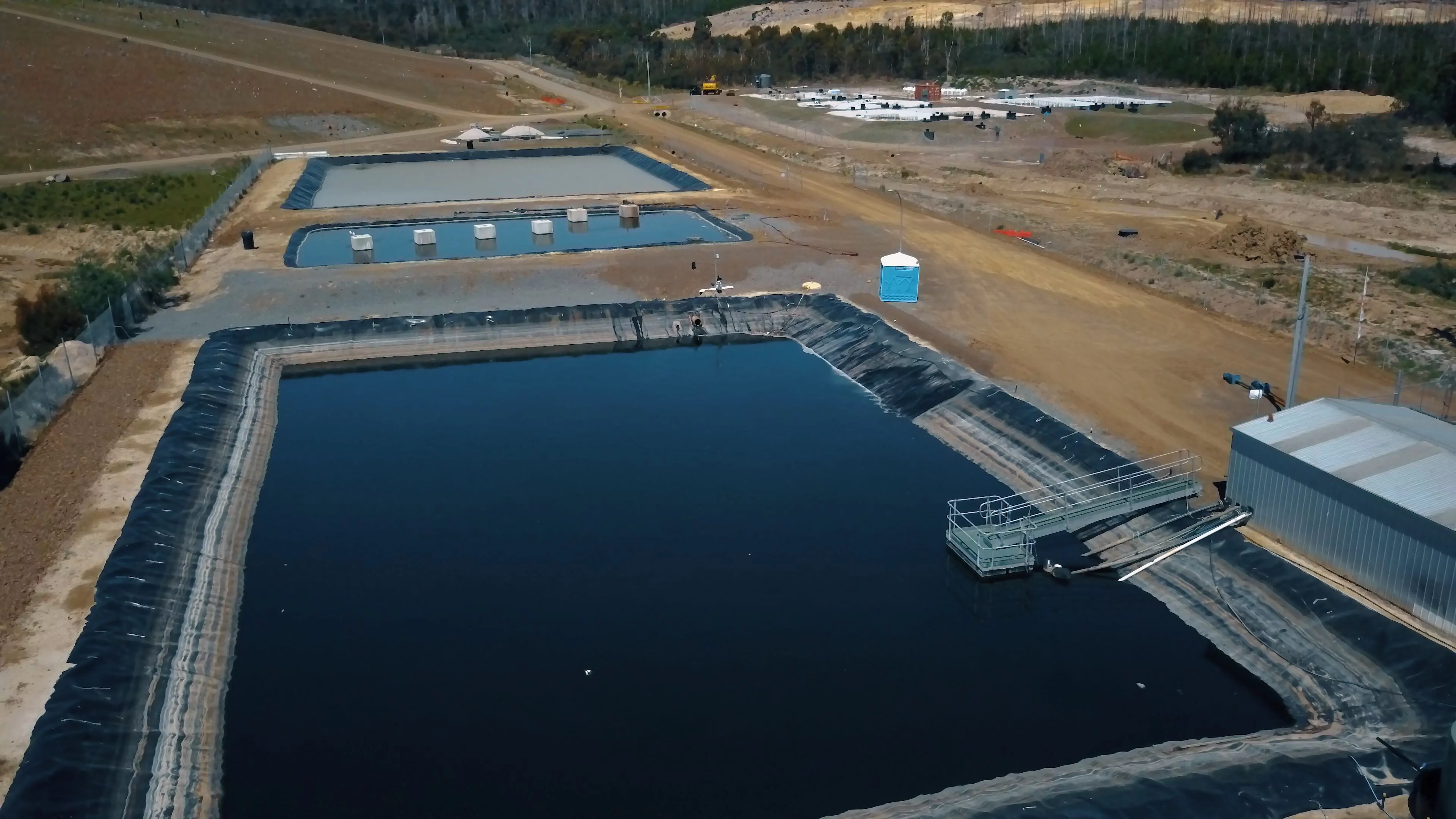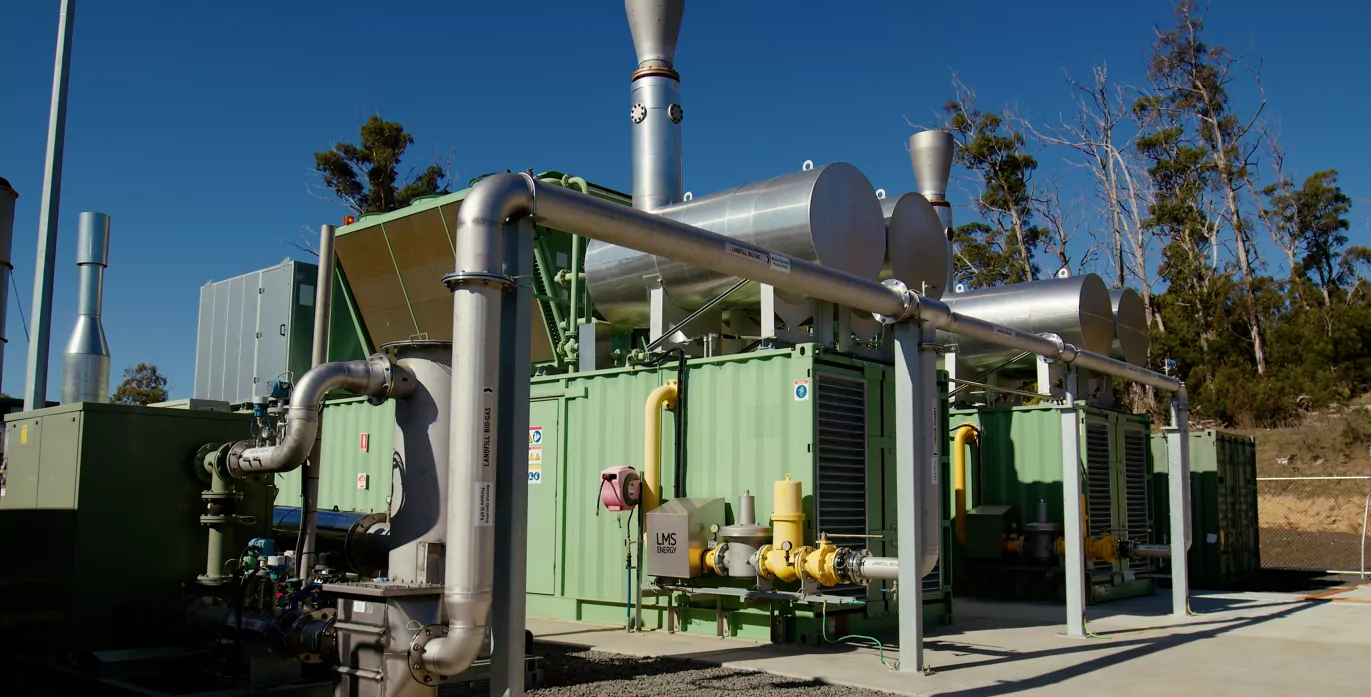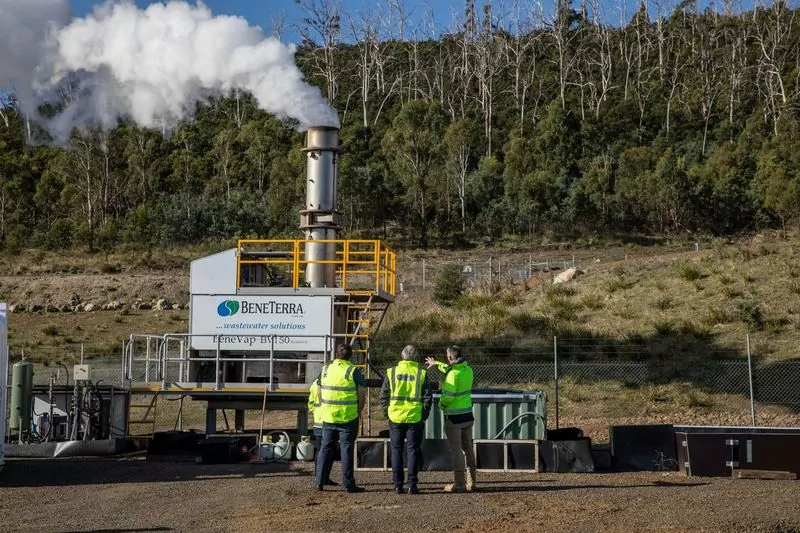SWS operates to industry-leading environmental standards and is committed to maintaining the highest standard of regulatory compliance across its operations.
SWS has an ongoing commitment to investing in innovative solutions to improve environmental management, reduce emissions and divert waste from landfill.
The Copping C Cell plays a unique and crucial role in waste management as the only facility in Tasmania accredited to safely accept and store contaminated waste.

Renewable energy
The Copping Renewable Energy Facility extracts gas from landfill to generate electricity .
Energy generated at the Copping site is fed back into the power grid and is sufficient to power around 1000 home every year.
Landfill gas is a natural byproduct of organic material decomposing in landfills. Made up of around 50% methane, LFG is a greenhouse gas 25 times more harmful than carbon dioxide and will naturally release into the atmosphere. Combusting landfill gas converts methane to carbon dioxide, which is a much less potent greenhouse gas and simultaneously generates an energy source. Last year, the facility captured over 9.5 million cubic metres of gas and abated 147,000 tonnes of CO2e, the equivalent of taking more than 59,000 cars off the road for a year.


BeneVap
Our leachate evaporation system, the BeneVap, reduces the volume of wastewater collected on site by up to 95%.
We collect all wastewaters produced from landfilling, known as leachate, at our Copping Waste Precinct, including from the C Cell. The BeneVap processes collected leachate through an evaporation chamber heated to 1500°C. At this temperature, contaminates forcibly evaporate, drastically reducing the volume of waste liquid.
The technology has improved our environmental performance and site safety levels by reducing the volume of stored leachate within our engineered storage ponds. This technology has alleviated the need to construct more leachate storage ponds and has enable us to improve its management of environmental risk from loss of containment for leachate.
Water monitoring
All stormwater naturally leaving our Copping Waste Precinct to dams, creeks or rivers is controlled, contained and tested regularly prior to it leaving the site. Results are compared to historical conditions before any waste was received on site to ensure there are no adverse effects on the surrounding environment.
Monitoring the quality of surface water in our waste facility sites is part of our regular quarterly testing practice. Surface water leaving the site has always met the standards set by the authorities. The stormwater management practices on site ensure that all clean rainwater stays clean and is directed around the landfill through a range of drains, culverts and pipes.
Our current implementations provide the surrounding environment and residents with high levels of protection and assurance.